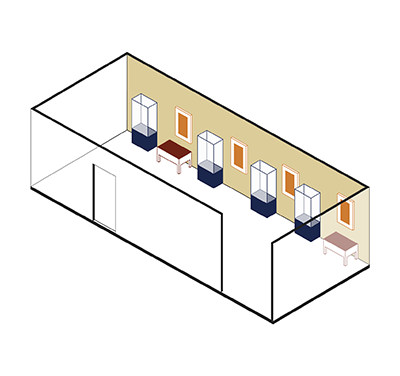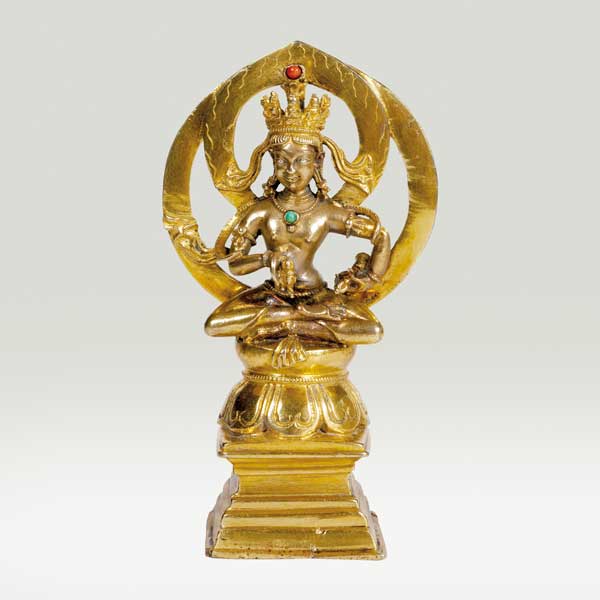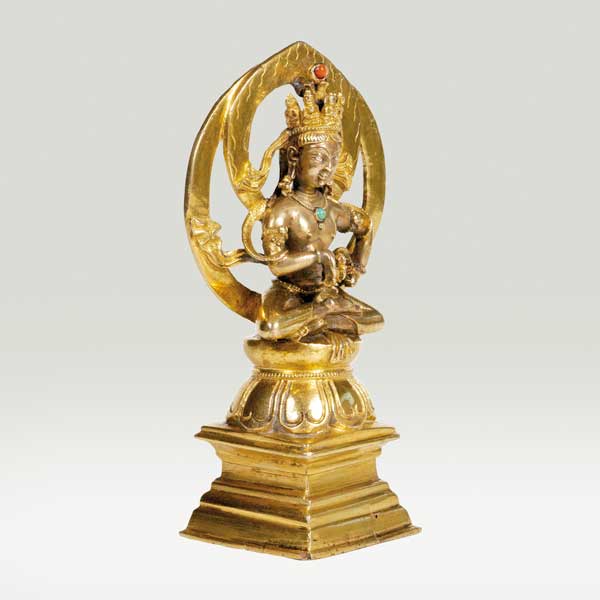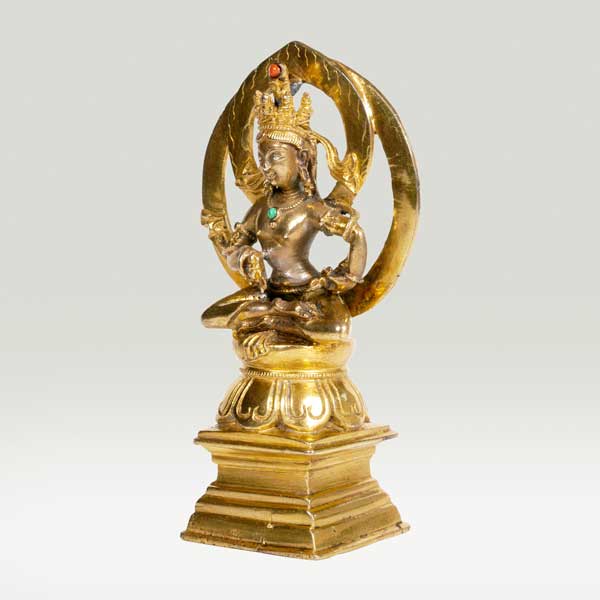Buddha Vajrasattva – The "Adamantine Being"
See it in the Museum

India and Nepal
Orientation 3
Display 2

ABS 249
Code: ABS 249
Country: Central Asia
Style: Kashmir style in central Asia
Date: 900 - 1000
Dimensions in cm WxHxD: 7.6 x 14 x 5
Materials: Gilt silver alloy
Buddha Vajrasattva – “The Adamantine Being”
Vajrasattva, Dorje Sempa in Tibetan, sits legs crossed in meditation on a single lotus pedestal. Young and handsome with a bright white complexion, he is adorned with the silk garments and jewellery proper to the divine manifestations. His right hand holds a vajra in front of his heart and an inverted bell against his thigh in the left. The vajra symbolises the male principle of “skilful means” or active compassion, and the bell the female principle of wisdom and emptiness. His five-leaf crown is composed of the Buddhas of the Five families.
The artist used a silver alloy to render the whiteness of the skin, the other elements being gilded. This statue is likely from the Dunhuang region, on the Silk Road. Stylistically, it possesses many typical features of the North-West Indian production: circular halo and pointed aureole with flamed pattern, slim waist and muscular figure, narrow seat with constricted lotus.
Vajrasattva is very popular in Vajrayana Buddhism. He condenses the five Buddha families and the hundred peaceful and wrathful deities. Through his famous “Hundred syllables mantra,” he is especially invoked for mental purification.
Vajrasattva, Dorje Sempa in Tibetan, sits legs crossed in meditation on a single lotus pedestal. Young and handsome with a bright white complexion, he is adorned with the silk garments and jewellery proper to the divine manifestations. His right hand holds a vajra in front of his heart and an inverted bell against his thigh in the left. The vajra symbolises the male principle of “skilful means” or active compassion, and the bell the female principle of wisdom and emptiness. His five-leaf crown is composed of the Buddhas of the Five families.
The artist used a silver alloy to render the whiteness of the skin, the other elements being gilded. This statue is likely from the Dunhuang region, on the Silk Road. Stylistically, it possesses many typical features of the North-West Indian production: circular halo and pointed aureole with flamed pattern, slim waist and muscular figure, narrow seat with constricted lotus.
Vajrasattva is very popular in Vajrayana Buddhism. He condenses the five Buddha families and the hundred peaceful and wrathful deities. Through his famous “Hundred syllables mantra,” he is especially invoked for mental purification.




